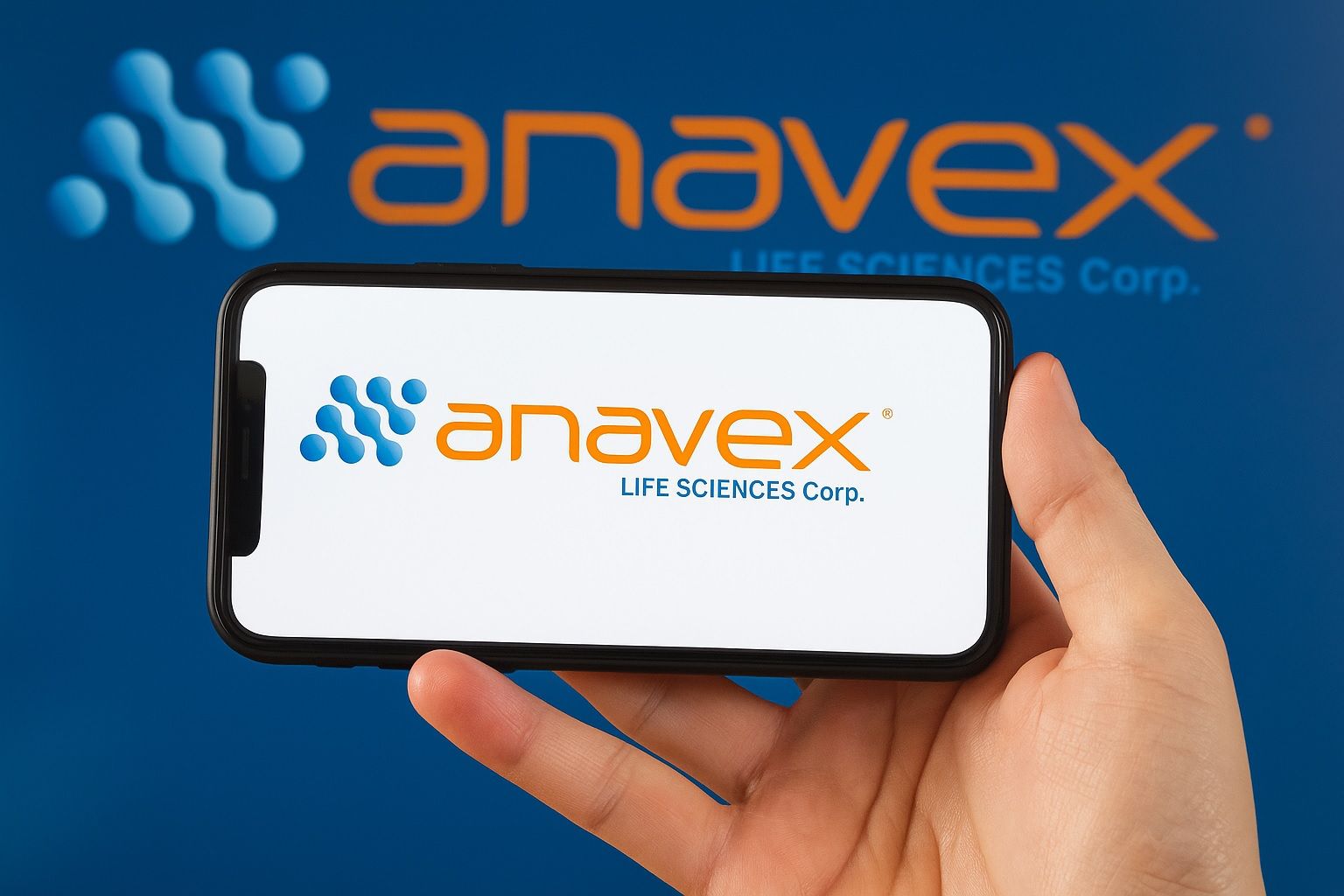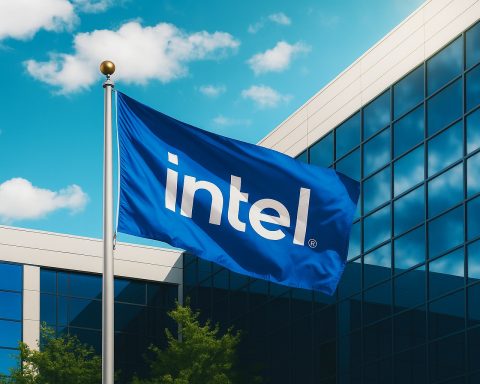Anavex Life Sciences (NASDAQ: AVXL) tumbled on November 14, 2025 after Europe’s drug regulator delivered a negative trend vote on its Alzheimer’s candidate blarcamesine. The company plans a CHMP re-examination and a fresh meeting with the FDA. Here’s what happened and what comes next.
By Staff Reporter — November 14, 2025
NEW YORK — Shares of Anavex Life Sciences Corp. (NASDAQ: AVXL) were under heavy pressure on Friday after the European Medicines Agency’s human medicines committee signaled it is leaning against approving the company’s experimental Alzheimer’s pill blarcamesine for early Alzheimer’s disease. [1]
The Committee for Medicinal Products for Human Use (CHMP) issued what is known as a negative trend vote on Anavex’s marketing authorization application (MAA), a strong indication that the committee is likely to adopt an unfavorable opinion at its formal vote in December. [2]
Anavex responded by announcing plans to request a formal re-examination of the CHMP opinion once it is adopted, and said the U.S. Food and Drug Administration has advised the company to request a meeting to discuss its Alzheimer’s trial results. [3]
Key takeaways
- EMA setback: CHMP has issued a negative trend vote on Anavex’s MAA for oral blarcamesine in early Alzheimer’s disease; a final opinion is expected at the committee’s December 2025 meeting. [4]
- Re-examination planned: Anavex says it will request a re-examination of the opinion and submit additional biomarker data to address regulators’ concerns. [5]
- FDA dialogue: The U.S. FDA’s Center for Drug Evaluation and Research (CDER) has advised the company to request a meeting on its Alzheimer’s clinical data, signaling ongoing U.S. regulatory engagement. [6]
- Stock reaction: AVXL shares have slumped sharply, with one report citing an intraday plunge of around 50% following the news; the stock recently traded around $5.70, roughly 39% of its 52‑week high of $14.44. [7]
- High short interest & volatility: Around 30% of the float is sold short, and the stock was already under pressure earlier this week after a high‑profile short call by investor Martin Shkreli. [8]
What Anavex announced today
In a GlobeNewswire release published early Friday, Anavex said it had been informed by the CHMP of a negative trend vote on its MAA for oral blarcamesine (ANAVEX®2‑73) in early Alzheimer’s disease, following an oral explanation meeting held this week in Europe. [9]
Key points from the company’s update:
- Negative trend vote: CHMP signaled an unfavorable stance on the MAA but has not yet adopted its final opinion. That formal opinion is expected at the December CHMP meeting. [10]
- Re-examination request: Anavex intends to request re-examination of the CHMP opinion once it is formally adopted. The company says it will provide additional biomarker data and other analyses based on feedback from the CHMP, EMA and the Alzheimer’s community. [11]
- FDA interaction: After initial dialogue, the FDA’s CDER advised Anavex to request a meeting to discuss its Alzheimer’s disease clinical trial results, suggesting a continued path to potential U.S. regulatory engagement even as the EU review hits turbulence. [12]
Company executives and scientific advisors stressed that blarcamesine remains an investigational therapy and highlighted what they see as its potential advantages:
- Anavex’s head of R&D, Dr. Juan Carlos Lopez‑Talavera, said the CHMP oral explanation allowed for “productive dialogue” and that the program “merits continuation,” according to the company’s statement. [13]
- Members of the company’s Scientific Advisory Board, including neurologists Marwan Sabbagh and Timo Grimmer, emphasized the pressing unmet need in early Alzheimer’s disease and argued that an oral therapy with a favorable safety profile and no need for routine MRI monitoring could provide a more practical option for patients and health systems. [14]
- CEO Christopher Missling framed the interactions with regulators as part of a “shared commitment” to addressing Alzheimer’s disease and reiterated that the company is focused on working with global regulators to define the optimal path forward. [15]
Anavex also filed a Form 8‑K with the U.S. Securities and Exchange Commission describing the CHMP negative trend vote and its intention to seek re-examination, formally logging the development as a material event for investors. [16]
What is a CHMP “negative trend vote” and why it matters
A trend vote is an informal poll inside the CHMP that happens before the committee adopts its final, written opinion on a new medicine. It gives sponsors a strong signal about the way the committee is leaning.
In prior cases involving other companies, regulators and industry observers have described a negative trend vote as meaning it is unlikely that CHMP will subsequently issue a positive opinion at the formal decision, unless significant new data are provided. [17]
That doesn’t make today’s signal final, but it is serious. If CHMP ultimately adopts a negative opinion in December:
- Anavex would have 15 days to notify EMA that it is requesting re-examination. [18]
- The company would then have up to 60 days to submit detailed grounds and additional analyses. [19]
- CHMP would have another 60 active days to re-examine the opinion before adopting a final stance. [20]
In other words, a re-examination could extend the EU regulatory saga by several months into 2026 — and there is no guarantee that the outcome changes, although other Alzheimer’s drugs have in rare cases won a positive EU opinion after an initial rejection when sponsors supplied new subgroup or biomarker analyses. [21]
AVXL stock today: heavy sell-off and high short interest
Investors have reacted swiftly to the regulatory news.
- Investing.com reported that AVXL stock “plummeted 50%” in Friday trading following the negative trend vote. [22]
- A related Investing.com company-news piece noted that the stock was recently trading at $5.69, about 39% of its 52‑week high of $14.44 and down nearly 22% over the past week, underscoring the degree of pressure heading into the CHMP meeting. [23]
- MarketScreener data show Anavex closing at $5.69 on November 13, already down 17.5% on the day and about 47% year‑to‑date, before Friday’s additional moves. [24]
- A StockTitan summary of the company’s latest 8‑K filing lists Anavex as a “Top Loser” on the day and puts short interest around 29.7% of the float, highlighting how crowded the bearish trade has become. [25]
On top of that, GuruFocus reported earlier this week that the stock dropped about 11% in a single session after controversial investor Martin Shkreli publicly disclosed a short position in AVXL and suggested that CHMP was likely to issue a negative opinion on blarcamesine. [26]
Taken together, the combination of:
- a binary regulatory event in Europe,
- high short interest, and
- a vocal short seller
has turned AVXL into one of the most volatile small‑cap biotech names on the U.S. market this week.
(As always, this article is for information only and does not constitute investment advice.)
Background: what is blarcamesine and how strong is the data?
Blarcamesine (ANAVEX®2‑73) is Anavex’s lead experimental therapy. It is:
- an orally available small molecule,
- designed to target SIGMAR1 and muscarinic receptors,
- with the aim of restoring cellular homeostasis in neurodegenerative and neurodevelopmental disorders. [27]
According to the company, the drug has:
- completed Phase 2a and Phase 2b/3 trials in Alzheimer’s disease,
- produced Phase 2 proof‑of‑concept data in Parkinson’s disease dementia, and
- been evaluated in adult and pediatric Rett syndrome studies. [28]
In late October, Anavex reported long‑term extension data suggesting that patients on oral blarcamesine in its Alzheimer’s program maintained substantially better cognitive scores than those in an Alzheimer’s Disease Neuroimaging Initiative (ADNI) control group over roughly 144 weeks, with a reported ADAS‑Cog13 difference of around −12.8 points in favor of blarcamesine in the company’s analysis. [29]
Earlier in 2025, the company also highlighted:
- precision‑medicine analyses suggesting “cognitive resilience” near normal aging in certain biomarker‑defined subgroups, and
- new publications describing potential mechanisms such as enhanced autophagy and neuroprotection in preclinical models. [30]
However, regulators in Europe appear unconvinced — at least so far — that the totality of evidence supports approval for broad early‑Alzheimer’s use. The EMA’s decision to lean negative at this stage likely reflects concerns about the robustness of clinical endpoints, consistency across subgroups, or the balance of benefit and risk relative to existing standards of care, though the agency has not publicly detailed its reasoning.
Beyond Alzheimer’s: the rest of the Anavex pipeline
While today’s focus is squarely on blarcamesine in Alzheimer’s, Anavex has other programs that could become more important if the EU decision ultimately turns negative:
- Rett syndrome: Blarcamesine has been studied in both adult and pediatric Rett syndrome populations, including late‑stage trials, though regulators have not yet ruled on these indications. [31]
- ANAVEX®3‑71 (a separate molecule):
- A small‑molecule candidate targeting SIGMAR1 and M1 muscarinic receptors,
- Positioned as a potential disease‑modifying therapy for cognitive impairment.
- In October, Anavex reported positive topline Phase 2 results in schizophrenia and successful development of a once‑daily tablet formulation. [32]
- Earlier‑stage assets such as ANAVEX 1‑41, ANAVEX 1066 and ANAVEX 1037 remain in seed‑stage development for various CNS and oncology indications. [33]
For now, though, blarcamesine in early Alzheimer’s remains the centerpiece of the Anavex story — and the driver of most of today’s market drama.
What’s next: key dates and questions for investors
1. December 2025 CHMP opinion
CHMP is expected to adopt its formal opinion in December 2025. A final negative opinion would confirm today’s negative trend signal and trigger the clock for a potential re-examination. [34]
2. Potential re-examination
If Anavex proceeds as planned:
- The company will formally request re-examination within 15 days of a negative opinion. [35]
- It then has up to 60 days to submit detailed grounds and new analyses, including biomarker data that it believes can address EMA’s concerns. [36]
- CHMP would, in turn, have up to 60 active days to re-evaluate the opinion with new rapporteurs before issuing a final verdict. [37]
Realistically, that means European investors may not have clarity on blarcamesine’s EU fate until spring or early summer 2026.
3. U.S. FDA meeting
On the U.S. side, the next milestone is a CDER meeting to discuss the Alzheimer’s trial dataset:
- The FDA has invited Anavex to request a meeting, but no date or specific pathway (such as a potential submission or need for additional trials) has been disclosed yet. [38]
- Depending on FDA feedback, Anavex could explore options ranging from additional analyses to new or confirmatory trials before pursuing a marketing application.
4. Financing and runway
MarketScreener data show Anavex with a market capitalization of roughly $590 million at a recent share price of $5.69, alongside a history of at‑the‑market (ATM) equity offerings in 2024–2025. [39]
With a high‑risk, CNS‑focused pipeline and no approved products, the company’s ability to fund extended regulatory timelines — especially if re-examination stretches into late 2026 — will be another variable investors watch closely.
Bottom line
For Anavex Life Sciences, today’s CHMP negative trend vote is a major setback but not a final verdict.
- On one hand, history suggests that once CHMP signals a negative stance, reversals are uncommon without compelling new data — and the EU review has been the most immediate path to the company’s first commercial Alzheimer’s indication. [40]
- On the other hand, Anavex still has levers to pull: a formal re-examination request, deeper biomarker‑driven analyses, and a fresh regulatory dialogue with the FDA.
For now, AVXL remains a high‑beta biotech story: potentially transformative if regulators ultimately embrace blarcamesine’s precision‑medicine approach, but increasingly binary — and volatile — as the company navigates a skeptical EMA and a heavily shorted stock.
Anyone considering the stock will need to weigh:
- the strength and durability of blarcamesine’s clinical data,
- the probability of success in EU re-examination and with the FDA, and
- the company’s financial flexibility over what could be an extended regulatory journey.
Again, this piece is not a recommendation to buy or sell AVXL, but a snapshot of the key developments shaping Anavex’s outlook on November 14, 2025.
References
1. investingnews.com, 2. investingnews.com, 3. www.globenewswire.com, 4. investingnews.com, 5. investingnews.com, 6. investingnews.com, 7. www.investing.com, 8. www.stocktitan.net, 9. www.globenewswire.com, 10. investingnews.com, 11. investingnews.com, 12. investingnews.com, 13. investingnews.com, 14. investingnews.com, 15. investingnews.com, 16. www.sec.gov, 17. firstwordpharma.com, 18. efpia.eu, 19. www.ema.europa.eu, 20. www.ema.europa.eu, 21. www.reuters.com, 22. www.investing.com, 23. www.investing.com, 24. www.marketscreener.com, 25. www.stocktitan.net, 26. www.gurufocus.com, 27. investingnews.com, 28. investingnews.com, 29. www.globenewswire.com, 30. www.marketscreener.com, 31. investingnews.com, 32. www.marketscreener.com, 33. www.marketscreener.com, 34. investingnews.com, 35. efpia.eu, 36. www.ema.europa.eu, 37. www.ema.europa.eu, 38. investingnews.com, 39. www.marketscreener.com, 40. firstwordpharma.com







